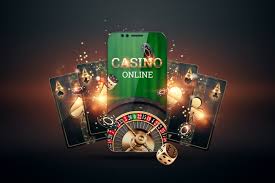
Loyalty Programs That Boost Long-Term Customer Engagement
In today’s competitive market, customer loyalty has become a crucial aspect of business success. Companies are constantly searching for innovative ways to retain their customers and foster long-term relationships. One of the most effective strategies for achieving this is through loyalty programs. In this article, we’ll explore various loyalty program strategies that can contribute to long-term customer engagement and satisfaction. Our discussion will include real-world examples and insights into best practices. For instance, an engaging platform like Loyalty Programs That Boost Long-Term Value megapari casino creatively implements loyalty programs to retain its gaming audience.
What is a Loyalty Program?
A loyalty program is a structured marketing strategy designed to encourage customers to continue shopping at or engaging with a business. Typically, these programs reward repeat customers for their ongoing patronage with points, discounts, exclusive offers, or other benefits. The core objective of a loyalty program is to create a sense of belonging and value for the customer, encouraging them to choose a brand over its competitors.
The Importance of Loyalty Programs
Establishing customer loyalty is pivotal for any business’s growth. Here are a few reasons why loyalty programs are important:
- Increased Customer Retention: Retaining existing customers is often more cost-effective than acquiring new ones. Loyalty programs incentivize customers to keep coming back.
- Higher Customer Lifetime Value (CLV): Loyal customers tend to spend more over time compared to new customers. A well-structured loyalty program can significantly enhance an individual’s lifetime value.
- Improved Customer Insights: Loyalty programs offer valuable data on customer behavior and preferences, which can be used to tailor marketing strategies.
- Brand Advocacy: Engaged customers are more likely to refer friends and family, expanding the customer base through word-of-mouth marketing.
Types of Loyalty Programs
There are various types of loyalty programs that businesses can implement, each catering to different customer needs and preferences:
Points-Based Programs
In this model, customers earn points for every purchase they make. These points can later be redeemed for discounts or free items. Airlines often use this model with frequent flyer miles as a classic example. Customers feel motivated to repeatedly purchase from the same company to accumulate points.
Tiered Loyalty Programs
Tiered programs reward customers based on their spending levels or engagement, creating different status levels (e.g., silver, gold, platinum). Each tier offers progressively better rewards, which can encourage customers to increase their spending to reach the next tier.
Cashback Programs
Cashback programs give customers a percentage of their purchase back, which can either be applied to future purchases or redeemed directly. This approach is particularly popular in retail and online shopping sectors.
Partnership Programs
These loyalty initiatives involve collaborations between businesses. Customers can earn and redeem points across multiple brands. For example, a hotel chain might partner with airlines, allowing customers to redeem loyalty points for flights or hotel stays.
Best Practices for Implementing Loyalty Programs

To create an effective loyalty program that benefits both the business and customers, consider the following best practices:
1. Know Your Audience
Understand your customer base and tailor the loyalty program to their preferences. Use data analytics to identify purchasing behavior and adjust rewards accordingly.
2. Keep it Simple
The structure of the loyalty program should be straightforward. Customers should easily comprehend how they can earn rewards and how to redeem them without complex rules or conditions.
3. Make it Valuable
Offer rewards that genuinely resonate with your audience. Customers should feel that their loyalty is being rewarded appropriately. Regular feedback from customers on the program can help in refining the offered benefits.
4. Promote the Program
Ensure that customers are aware of the loyalty program and understand its benefits. Use various marketing channels, including email, social media, and in-store promotions, to spread the word.
5. Monitor and Adapt
Carefully track the performance of the loyalty program and make adjustments as needed. Customer trends and behaviors change, and being adaptable will help improve customer satisfaction over time.
Case Studies of Successful Loyalty Programs
To further understand the impact of loyalty programs, let’s examine a few successful real-world examples:
Starbucks Rewards
Starbucks’ loyalty program is widely recognized for its effectiveness. The Starbucks Rewards program allows customers to earn stars for each purchase, which can be redeemed for free drinks and food. Additionally, members receive personalized offers and early access to products. This program has significantly increased customer retention and daily spending among members.
Sephora Beauty Insider
Sephora’s program is another prime example. It offers three tiers of rewards based on how much customers spend annually. Members earn points that can be redeemed for samples, exclusive products, and personalized experiences. This approach not only encourages higher spending but also fosters a community of beauty enthusiasts.
Conclusion
Investing in a well-structured loyalty program can yield significant long-term benefits for a business. By understanding customer preferences, carefully designing the program, and implementing best practices, companies can foster deeper connections with their customers. Over time, these relationships contribute to increased customer lifetime value, enhanced brand loyalty, and ultimately, greater business success. As consumer behavior continues to evolve, maintaining a commitment to improving loyalty initiatives will be crucial for any brand looking to thrive in a competitive market.


